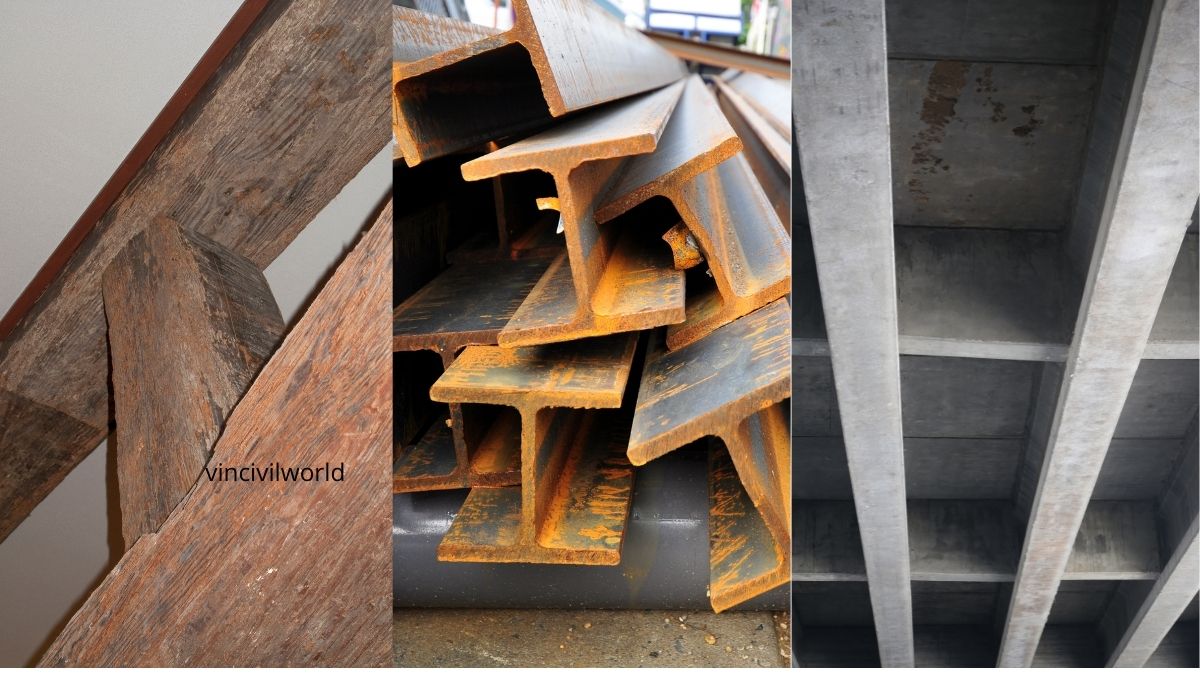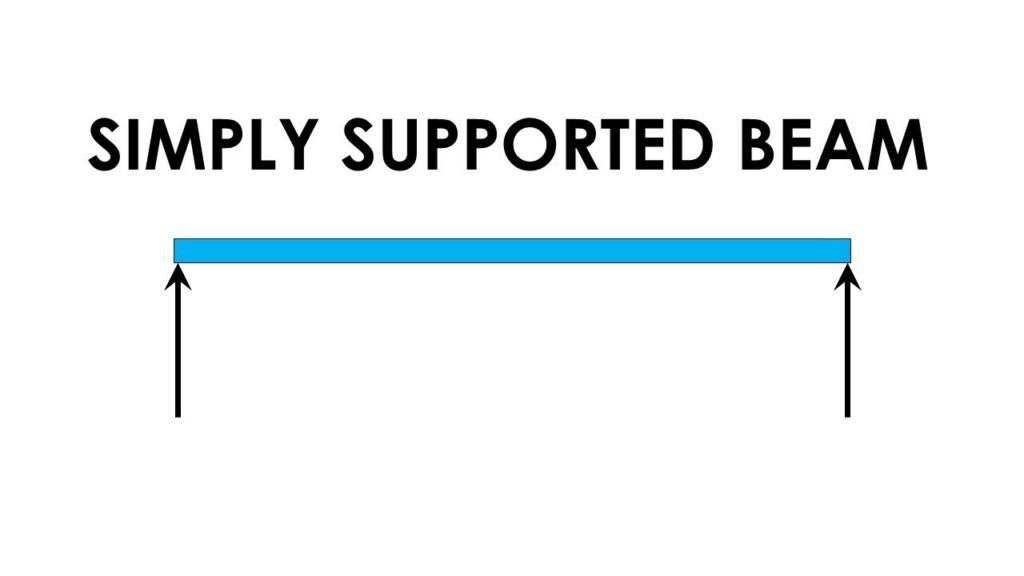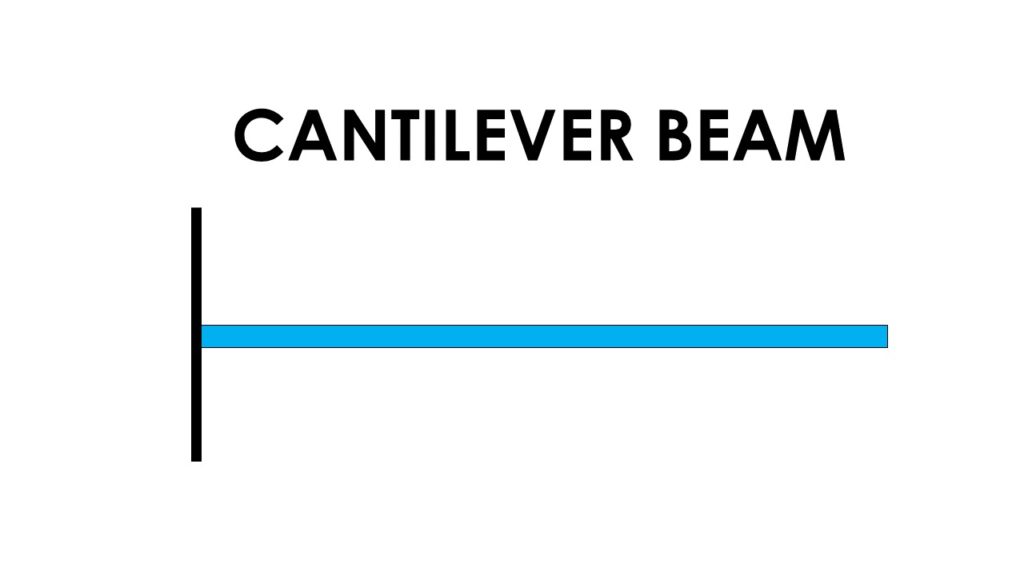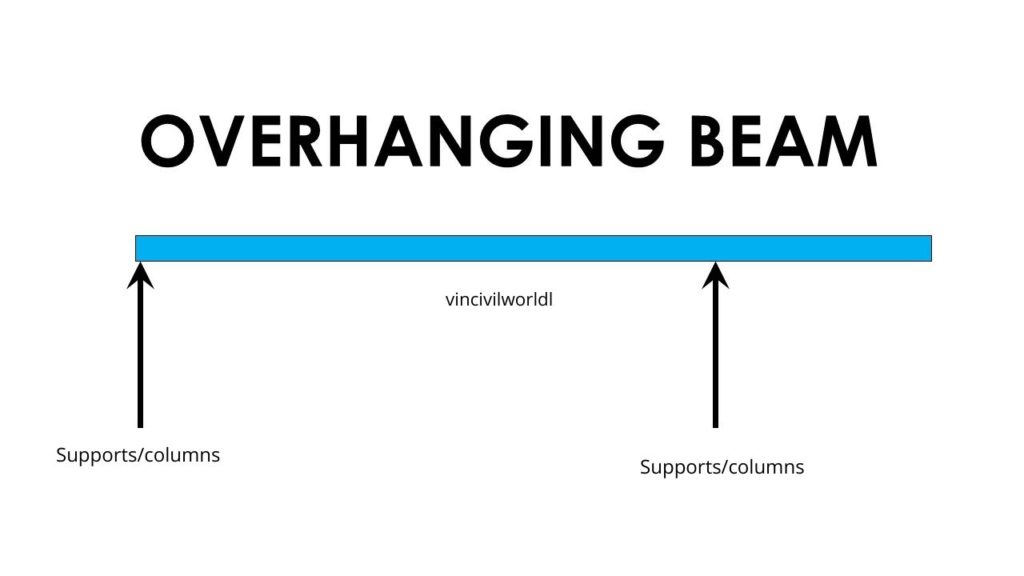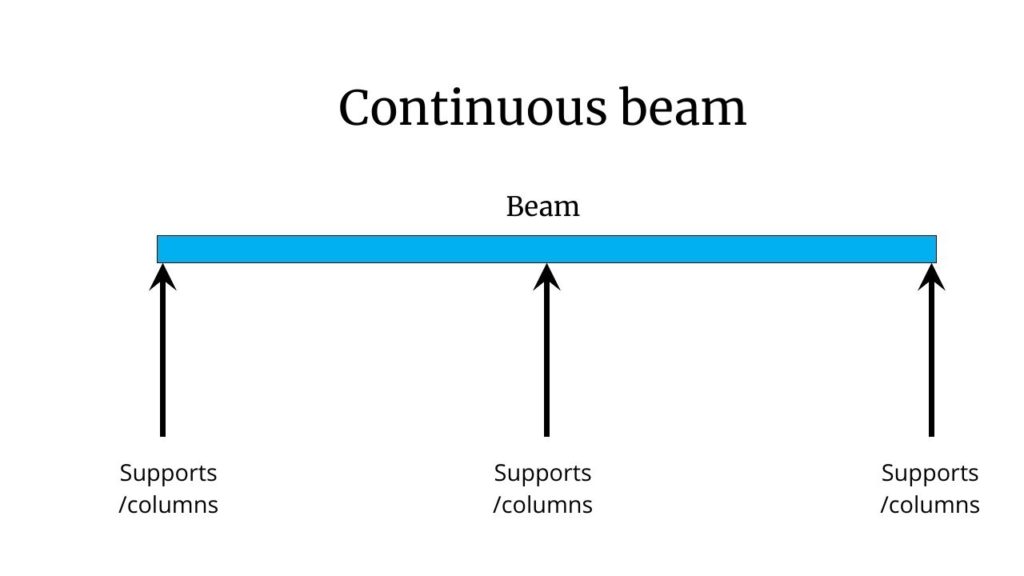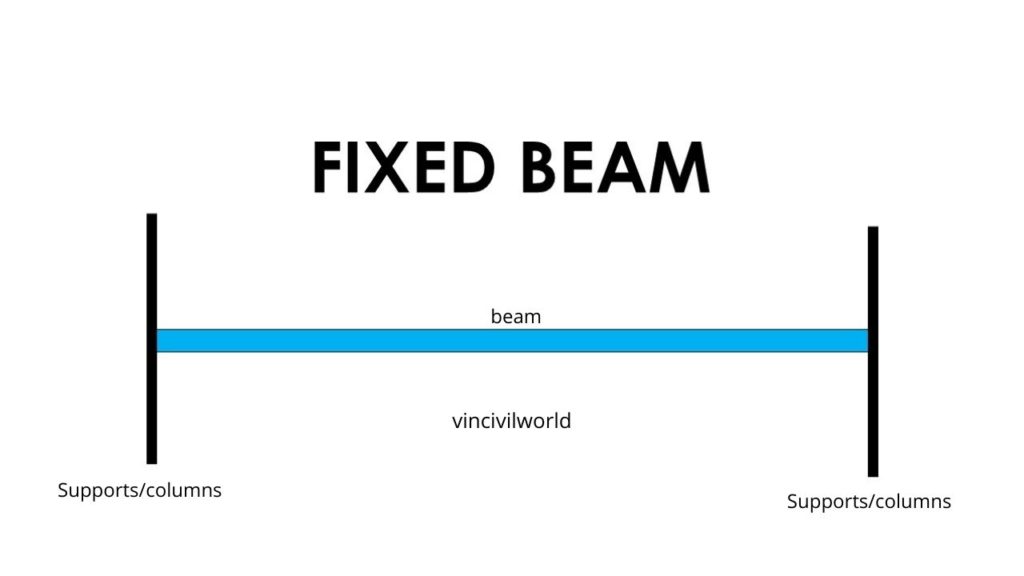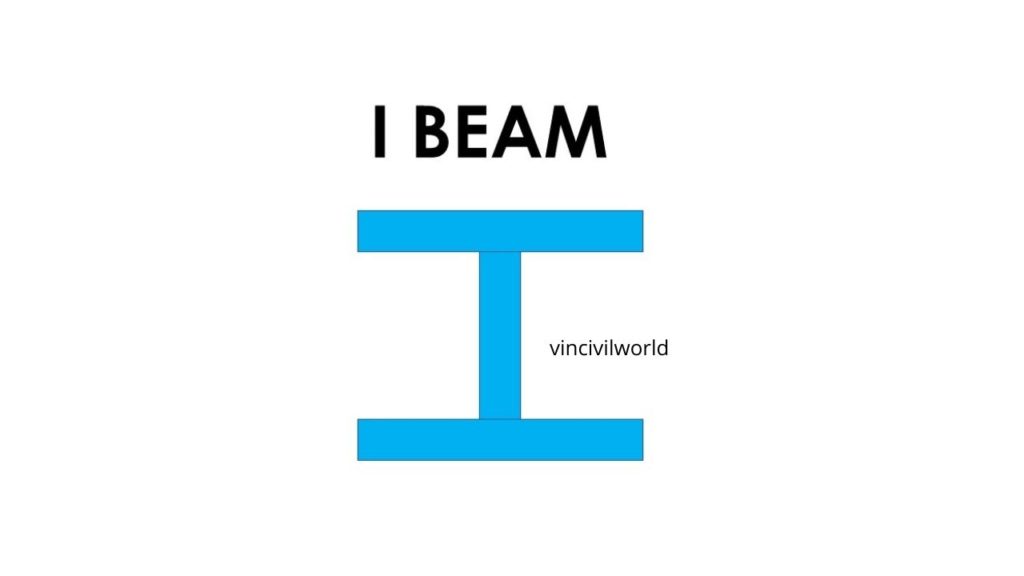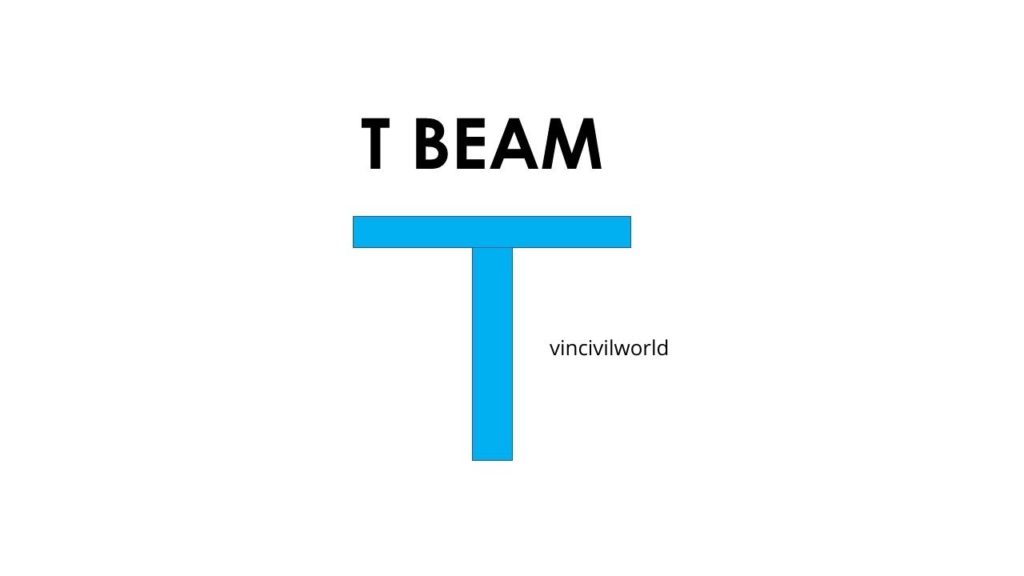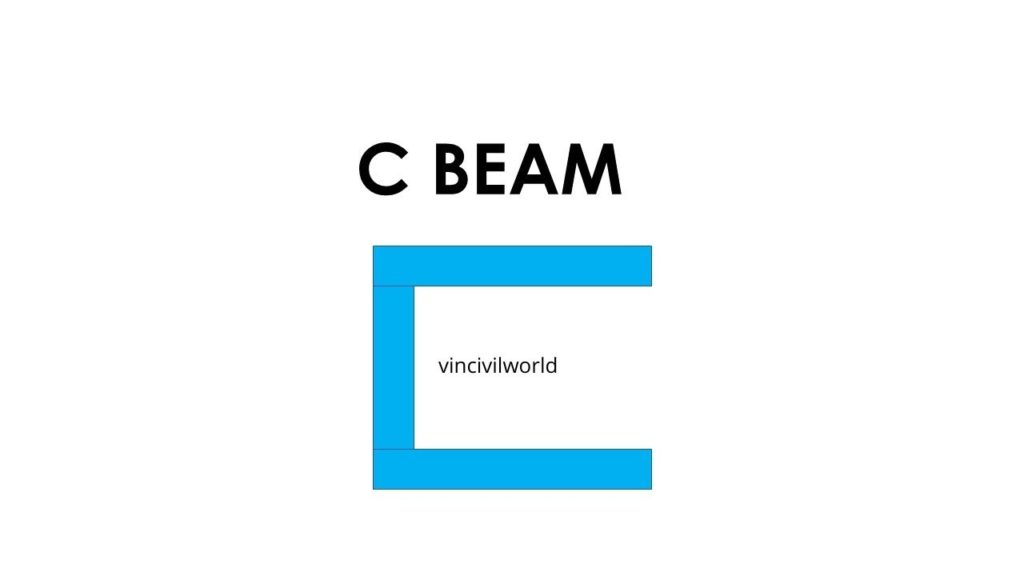Types of beam – The beam is a horizontal structural member in a building. The main function beam is to withstand the lateral loads on the axis of the beam. They can also withstand shear forces and bending moments. Also, it helps in transferring loads to the column. The mode of deflection in a beam is through bending. In this article, we will discuss the various types of the beam in a building.
Types of beam
Beams are classified into various types
1. On the basis of equilibrium condition
- Statically determinate beam
- Statically indeterminate beam
2. On the basis of types of support
- Simply supported beam
- Cantilever beam
- Overhanging beam
- Continous beam
- Fixed beam
3. On the basis of the shape of the cross-section
- I beam
- T beam
- C beam
- L beam
- Rectangular beam
4. On the basis of construction materials
- Timber beam
- Steel beam
- Reinforced concrete beam
- Composite beam
Also read : Types of Bonds in brick masonry
Types of beams – Based on equilibrium condition
Statically determinate beam
According to the statically determinate beam, the calculation of forces on the beam is on the basis of equilibrium conditions. That is the sum of horizontal force is equal to zero, the sum of vertical force is equal to zero. Also, the sum of the moment at any point is zero. Public and residential buildings have statically determinate beams.
Statically indeterminate beam
In the case of a statically indeterminate beam, for calculation of unknown forces equilibrium condition is not sufficient. This type of beam is able to redistribute the loads. Therefore failure in support does not affect the whole structure.
Types of Beam – Based on types of support
Simply supported beam
A simply supported beam is a type of beam which consists of pin support at one end and roller support at another. Therefore they are free to rotate. This beam can withstand both shear force and bending moment.
Cantilever beam
The cantilever beam is a type of beam which consist of one fixed end and another free end. It is a projecting beam. The main application of cantilever beams is in trusses, bridges, towers etc. This beam undergoes both shear force and bending moment.
Types of beam – Overhanging beam
The overhanging beam is a type of beam consist of two roller supports and one end extended beyond the supports. If the beam is extended beyond the supports in both ends, then it is called a Double overhanging beam. General application of overhanging beams includes the construction of balconies and shades. This beam has the properties of both cantilever and simply supported beams.
Continuous beam
Continuous beams consist of more than two supports. That is, this beam have intermediate supports. In such beams, one end have hinge supports and the other have roller supports. This beam is suitable for the construction of bridges with longer spans.
Fixed beam
The fixed beam consists of both ends fixed. It restricts rotation and other movements. Therefore it undergoes only shear force. The bending moment will be zero. It is suitable for trusses.
Types of beam – Based on Cross sectional shape
I beam
I beam is a type of beam which have an I shape. Other names of I beam are H beam or Universal beam. The perpendicular component of the I beam is the web. The horizontal components are flanges. I beam is suitable for many construction areas, as they are more economical. This beam has the ability to withstand loads without buckling.
T beam
T beams are generally RCC beams with a flange and a rib. The horizontal top part is the flange which helps resist compressive forces and the vertical component is the rib which resists the shear forces. It is suitable for frame structures.
C beam
C beam is also known as a Channel beam consist of two flanges and a web. It is C in shape.
L beam
L beam or flanged beam are used as end beams. It has a slab with only one side. They are monolithic beams. This type of beam can resist bending moments, shear force and torsional moments. It is suitable for roof or floor construction.
Rectangular beam
These are the most commonly used beam in construction. They can be cast in situ or precast. Rectangular beams are singly reinforced or doubly reinforced.
Types of beam – Based on construction materials
Timber beam
Timber beams are lightweight beams made from wood. It was used in construction from the olden days. But they are less economical compared to concrete beams. It is suitable for wooden roof trusses. Before using timber beam it is subjected to proper treatment.
Steel beam
The steel beam is a type of beam which are made from molten steel. It is suitable in places where loads are heavy. These types of the beam can be straight, curved or tapered. Steel can withstand tensile stress and are resistant to fire and corrosion.
Reinforced concrete beam
RCC beams are important beams in construction. They can withstand transverse loads. It acts as a load-bearing unit. This type of beam has high compressive strength. Dams, footing, piers are some applications of Reinforced concrete beams.
Composite types of beam
This beam consists of more than one material. This beam has high stiffness and less deflection than steel beams. It is suitable for the faster construction of structures.

